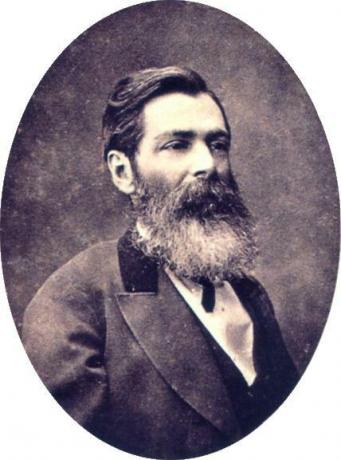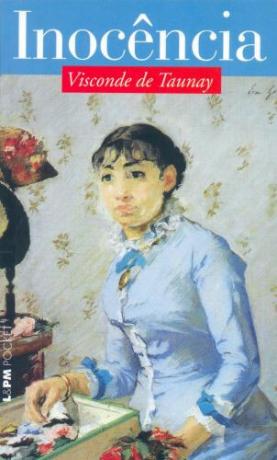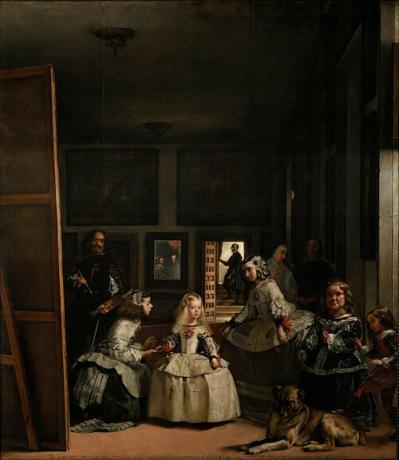indian romance is a type of narrative produced by writers of the Brazilian romanticism, in the 19th century, in the context of the second reign. It aims to awaken in readers the feeling of nationality. It features an Indian or an Indian as the protagonist, in addition to having the forest as a backdrop for a love story. the guaraní, by José de Alencar, was the first Brazilian Indianist novel.
Read too: Urban novel — a type of narrative whose action space is the city
Summary of Indianist Romance
In the Indianist novel, the Indian and the forest are symbols of the Brazilian nation.
The Indianist novel is part of a process of construction of national identity.
The first Indianist novel in Brazil, according to specialized critics, was the guaraní, in Jose de Alencar.
The Indianist novels of Brazilian Romanticism were produced in the historical context of the Second Reign.
Do not stop now... There's more after the ad ;)
What are the characteristics of the Indianist novel?
The Indianist romance is a long
narrative wherein protagonist is an Indian. Thus, elements of indigenous culture are highlighted to give verisimilitude to the work. Nonetheless, prevailsm the moral values of 19th century bourgeois society, to the detriment of properly indigenous values.The works considered as Indianist novels of the Romanticism Brazilians have the following characteristics:
construction of a Brazilian identity;
indigenous as a national hero;
reconstitution of the historical past;
enhancement of bourgeois morality;
appreciation of bravery and humility;
idealization of nature;
jungle as a narrative space;
idealized love and woman;
harmony between colonized and colonizer;
idealized miscegenation process;
resumption of medieval values;
loving allegiance.
It is important to mention that this kind of romance It wasn't written by Indians. Therefore, it brought the vision of the man of the city, and not indigenous, about the native culture. But it fulfilled its main role: to provoke in the Brazilian people the pride of being the result of the miscegenation between Indians and Portuguese.
Later, other works dialogued with the romantic Indianist novel. However, they did not bring the boastful perspective. On the contrary, they resorted to satire/irony in the construction of national identity. Thus, the Indian started to be treated with more realism in Brazilian literature, despite the fact that we still have rare authorial voices that are actually indigenous.
Check out our podcast: The figure of the trickster in Brazilian literature
Historical context of the Indianist novel
The Indianist novel of Brazilian Romanticism is inserted in the historical context of the Second Reign (1840–1889). Important historical events that contributed to the end of the monarchy took place during this period, such as:
Eusébio de Queiros Law;
Paraguay War.
Therefore, the Indianist novel is part of a historical process of construction of national identity, started with the Independence, in 1822, and concluded with the end of the Second Reign. Republic proclaimed, in 1889, a new nationalist phase began, now completely disconnected from Portuguese rule.
Creation of the Indian Romance
The Indianist novel is part of the romantic building project literature national. So the first romance Indianist of our literature was the guaraní, by José de Alencar, published in 1857. The novel tells the love story between the Indian Peri and Cecília, a young white woman and the daughter of a Portuguese man.
Authors of the Indianist novel
José de Alencar (1829–1877) is the main author of the Indianist novel. In addition to him, other writers produced works of an Indianist character, such as:
Bernardo Guimarães (1825–1884);
Lourenço da Silva Araújo (1803–1864);
Mario de Andrade (1893–1945);
Antonio Callado (1917–1997);
Darcy Ribeiro (1922–1997).
José de Alencar and the Indianist novel

José de Alencar was the main author of the Brazilian Indianist novel. your romance the guaraní was a great success in the 19th century. It was initially published in the Rio de Janeiro diary, sought after by a public thirsty for love and adventure, which was fascinated by the descriptions made by the narrator of José de Alencar.
In his work, the forest is highlighted and becomes a space for bravery and amorous outbursts. So, two national symbols rise sovereign: the forest and the Indian. José de Alencar also seeks to create his own language, which gives an aspect of indigenous speaking to the formal Portuguese used in his works.
He also uses some indigenous words in his narratives, in order to promote verisimilitude in his characters. But Alencar's protagonists, despite being brave, areindigenous submissive to the colonizer. This characteristic is noticeable in characters like Iracema and Peri.
Works of the Indianist Romance
The main works of the Indianist novel are part of José de Alencar's trilogy:
ubirajara (1874) — recounts indigenous life before the arrival of the colonists.
iracema (1865) — shows the first contacts between Indians and conquerors.
the guaraní (1857) — depicts the Brazil already colonized and the coexistence between indigenous and colonizers.
Other Indianist-themed narratives were written, such as:
simá (1857) — novel by Lourenço da Silva Araújo.
jupira (1872) — novel by Bernardo Guimarães.
Macunaima (1928) — novel by Mário de Andrade.
quarup (1967) — novel by Antonio Callado.
Maira (1976) — novel by Darcy Ribeiro.
Video lesson about MacunaímThe, by Mario de Andrade
By Warley Souza
Literature teacher
Would you like to reference this text in a school or academic work? Look:
SOUZA, Warley. "Indianist Romance"; Brazil School. Available in: https://brasilescola.uol.com.br/literatura/romance-indianista.htm. Accessed on March 6, 2022.



